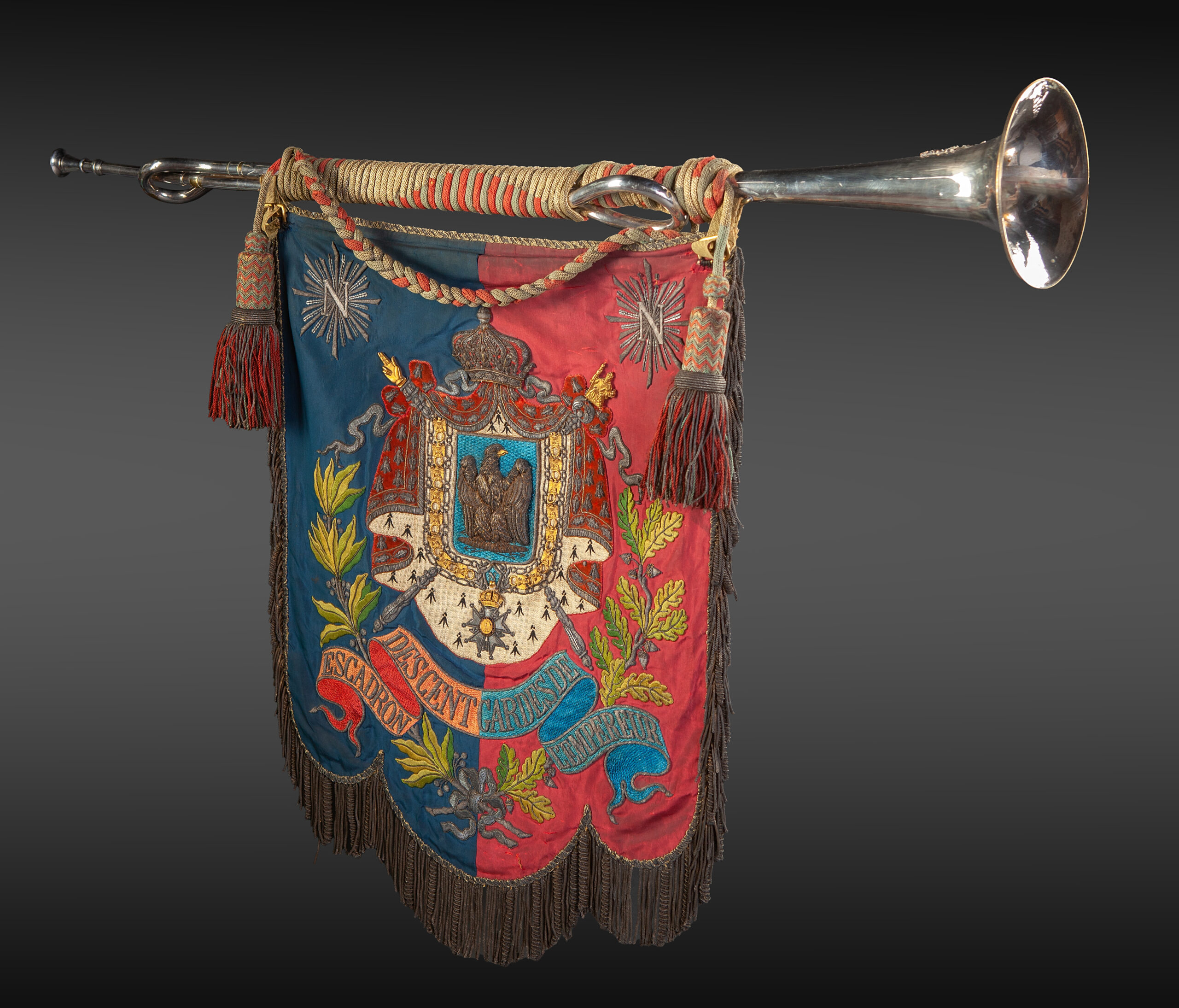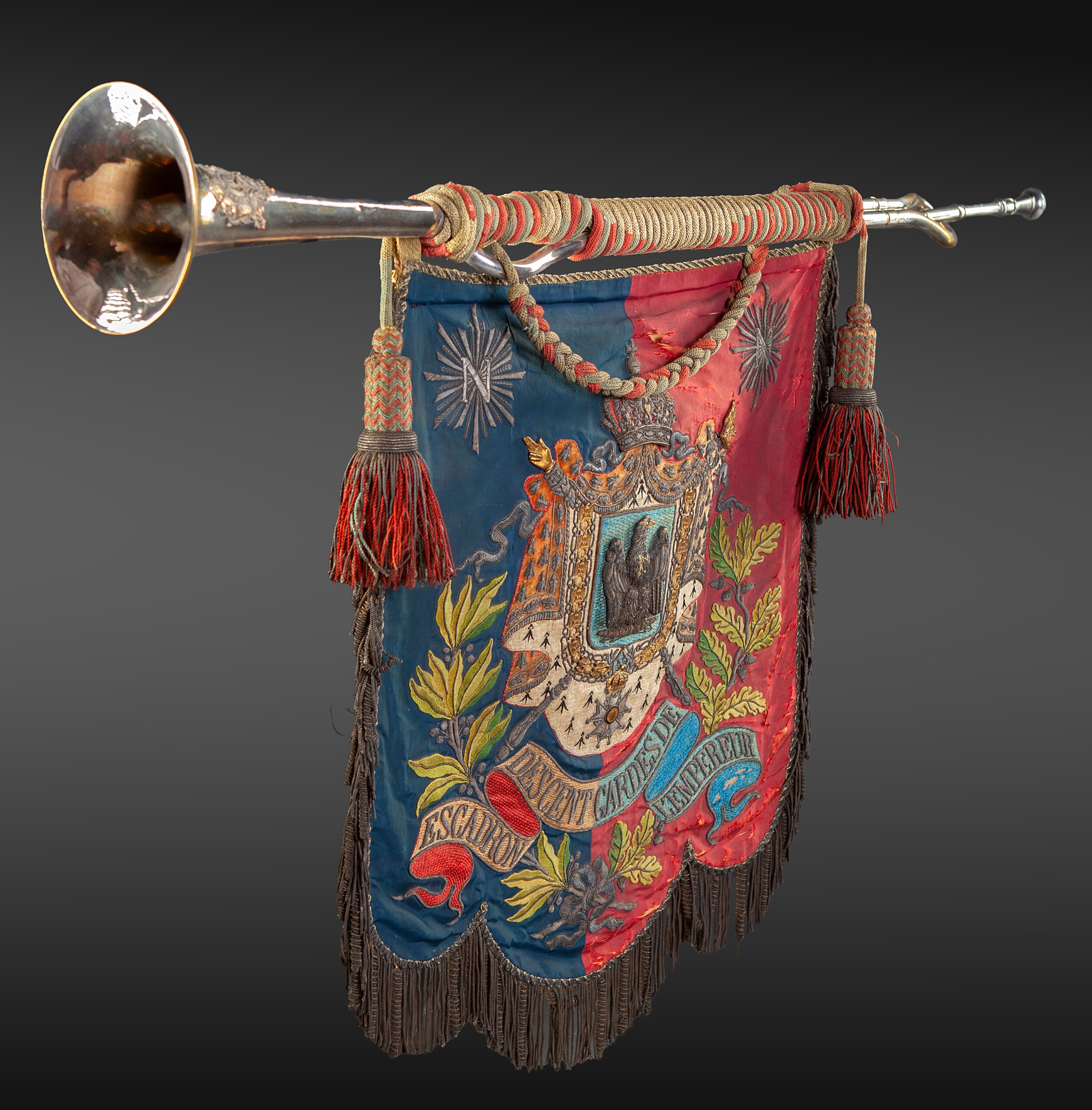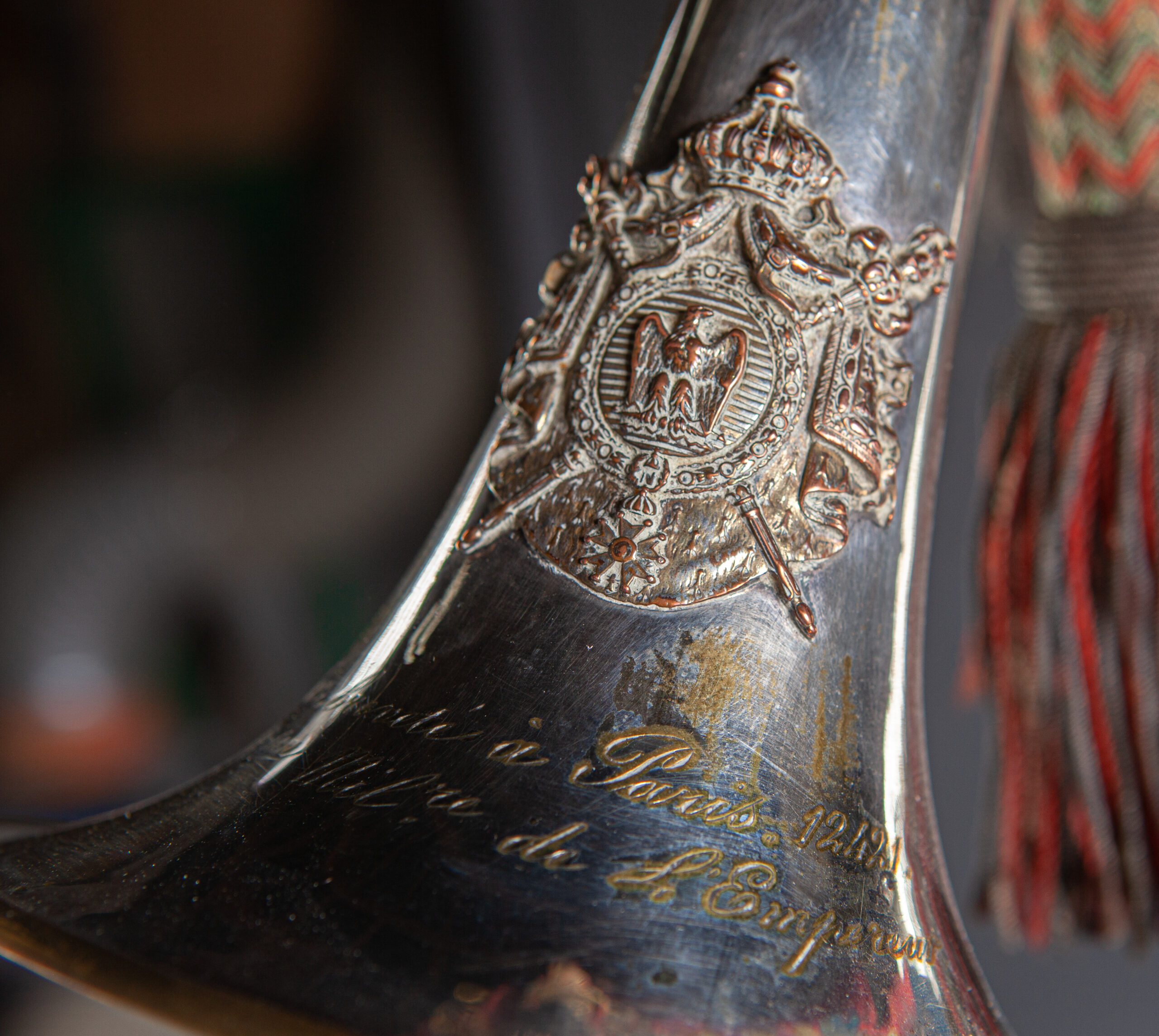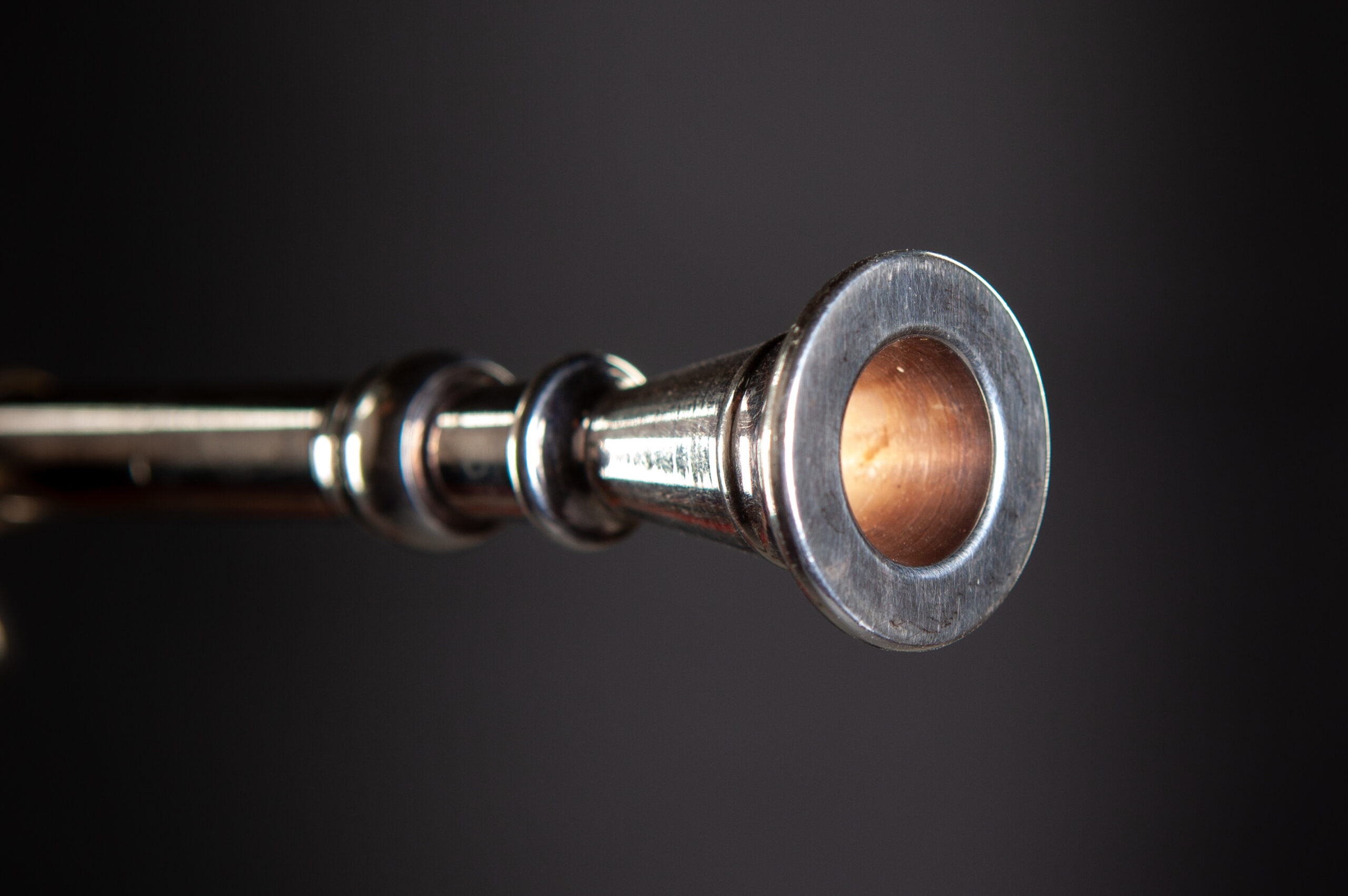PARADE TRUMPET
Hundred Guards Regiment
Adolphe Sax in Paris.
The instrument is signed on the bell: “Adolphe Sax, patented in Paris, [serial number] 12 421, Fcant de Mson Milre [Manufacturer of the Military House] of the Emperor”, and decorated with a motif with large chiseled and gilded imperial weapons.
It is decorated with its braided cord, made of green-blue and red cotton threads, enriched with golden parts and its two fringed pompoms. Two-gallon daffodil fasteners and two two-bar gilt brass buckles.
The blue and red silk flame is rectangular in shape. It is divided into two vertical parts, the left part is blue silk, the right part is scarlet silk. In its center, the great coat of the Empire is richly embroidered in cotton threads, silver threads and gilded silver sequins, velvet and silk threads. The imperial eagle surrounded by the Grand Collar of the Legion of Honor on a background of imperial habit surmounted by the crown with scepter and hand of justice, H 30.5 cm x 34 cm wide.
On each side at the top, an “N” is embroidered in golden silver threads against a background of a radiant sun. H 9.5 cm, width 8.5 cm. In the lower part, a ribbon woven in scarlet and blue silk threads is embroidered in gilded silver threads with the inscription “SQUADRON OF THE EMPEROR’S HUNDRED GUARDS”. An oak branch and a laurel branch are embroidered in natural silk threads and gilded silver threads, tied together with a ribbon, they start from the lower end and go up on each side of the imperial mantle.
The flame is framed by an embroidered border in silver-gilt threads.
Trumpet length: 93.5 cm
Dimensions of the flame excluding fringe: 44 x 52.5 cm
Antoine-Joseph Sax, better known as Adolphe Sax, born November 6, 1814 in Dinant in Belgium and died February 7, 1894 in Paris, is a Belgian musical instrument maker, best known for having invented the saxophone and the saxhorn.
The mounted squadron of the Hundred Guards, commonly called “the Hundred Guards”, had four parade trumpets. Eight flames including four spares were ordered to equip them. (There was no drummer in this mounted squadron.)
The serial number 12421 dates the manufacture from 1854, i.e. at the time of the creation of this squadron by Emperor Napoleon III.
In an exceptional state of preservation, it is the only trumpet from the Hundred Guards squadron which has reached us complete in its original condition.
(Another is in a private collection, but does not have its original, very special mouthpiece, the bowl of which has wide, flat edges for playing on horseback. The other trumpets or banners listed are all incomplete.)
Provenance: Bernoulli collection, (Switzerland) then Debaecker collection (France).
Bibliography:
Catalog of Sax instruments at the Brussels Instrumental Museum.
Malou Haine & Ignace de Keyser: pp 120,121, 238.
Georges Kastner: General manual of military music. (Paris 1848;
Monkoff reissue, Geneva 1973)



